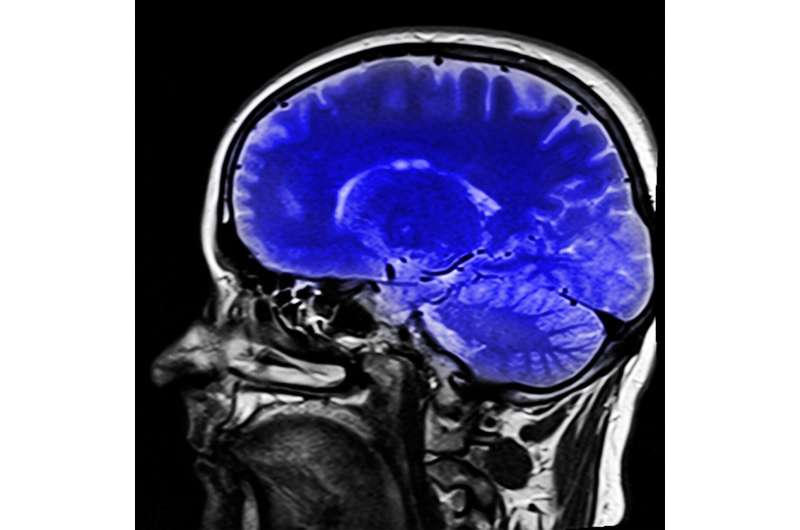Interplay between brain networks in autism

Autism spectrum disorder (ASD) is associated with an increased focus on one's internal experiences along with a reduction in responsiveness to external social surroundings. Now, a new study investigates the dynamics of brain connectivity between brain networks associated with internal experiences, external attention, and switching between internal versus external states. The study appears in Biological Psychiatry: Cognitive Neuroscience and Neuroimaging.
The researchers used functional magnetic resonance imaging (fMRI) data from the Autism Brain Imaging Data Exchange (ABIDE) to compare 325 individuals with ASD with 356 people in a typically developing control group. They measured connectivity dynamics between three key brain networks: the default-mode network (DMN), the frontoparietal network (FPN), and the salience network across time.
"The role of each of these intrinsic brain networks has been investigated individually in people with ASD," said Tae-Ho Lee, Ph.D., co-senior investigator at Virginia Tech, Blacksburg, VA, U.S., "but our study is the first to examine how these three networks interacted dynamically at the large-scale brain-systems level, rather than focusing on a single network or static connection."
The authors' analysis determined that the salience network excessively activates the DMN—which is associated with mind-wandering and introspective thoughts—while inhibiting the FPN over time in those with ASD. On the contrary, in the typically developing group, the salience network deactivates the DMN and activates the FPN, which directs attention to the external surroundings spontaneously and momentarily, and leads them to regularly monitor (and be more responsive to) possible environmental changes.
"Our study provides a potential mechanistic explanation of why ASD is associated with more internally-focused cognition, including mind-wandering and prospection, and less of a focus on external environmental cues," added co-senior author Hyungwook Yim, Ph.D., Hanyang University, Seoul, Republic of Korea.
The work might provide a better understanding of the interplay between brain networks in other situations, as well. "For example, older adults are more likely to fail to ignore unnecessary information from their surroundings," said Dr. Lee. "According to previous studies, the salience network in older adults excessively activates the FPN while inhibiting the DMN—just the opposite of ASD interactions. Future research might find that children with ADHD have a pattern of connectivity dynamics that is opposite to that of those with ASD," he speculated.
Cameron Carter, MD, editor of Biological Psychiatry: Cognitive Neuroscience and Neuroimaging, said of the work, "This important study shows how new approaches to analyzing the dynamic patterns of interactions between brain systems over time can help us understand the neural basis of disabling symptoms such as increased lapses of attention in autism, and identify important new targets for invention to improve cognitive functioning in children and adults who are on the autism spectrum."
"Our study provides a mechanistic explanation of why ASD individuals are less attentive to their surroundings and show more internally focused cognition such as mind-wandering and prospection. This new knowledge could be potentially useful for improving diagnosing ASD, or aid in informing therapeutic strategies for improving the wellbeing of those with ASD," said Dr. Lee.
More information: Ya-Yun Chen et al, Excessive Functional Coupling With Less Variability Between Salience and Default Mode Networks in Autism Spectrum Disorder, Biological Psychiatry: Cognitive Neuroscience and Neuroimaging (2021). DOI: 10.1016/j.bpsc.2021.11.016


















